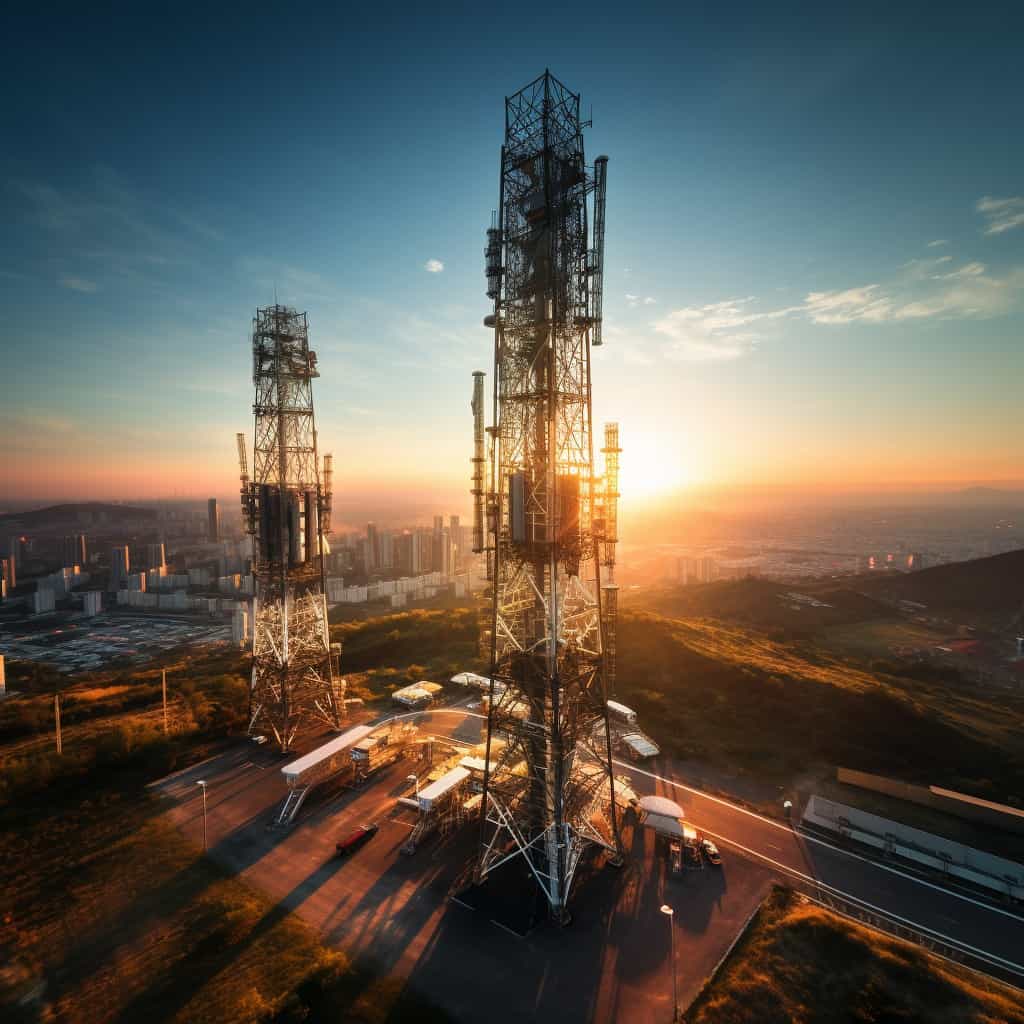With the rapid evolution of technology, the world is being introduced to increasingly faster and more efficient forms of wireless communication. 5G, or the fifth generation of cellular network technology, has become a buzzword and a symbol of the next leap in wireless connectivity. Central to this innovation are the 5G cell towers, which will define our internet and communication experience in the coming years.
But what really is 5G? How does it differ from its predecessors, and what implications does it bring? This blog post aims to shed light on the essential aspects of 5G cell towers that everyone should know.

1. The Foundation: Understanding Cell Towers
Before diving into the intricate details of 5G, it’s fundamental to understand its backbone: the cell tower. So, what is a cell tower?
Essentially, a cell tower (also referred to as a cellular base station) is a high structure that broadcasts and receives radio signals from mobile devices. These towers are connected to a network of other towers, forming a wide-reaching web that provides cellular coverage across regions.
5G cell towers, like their 4G counterparts, are designed to manage these signals but are adapted to handle increased data loads at much faster speeds. These towers are essential to realize the promise of 5G – reduced latency, faster downloads, and the capability to connect a vast array of devices simultaneously.
2. Density And Reach: Small Cells Are The Way Forward
Traditional cell towers, known for their towering heights and broad coverage, are not going away with 5G.
However, 5G introduces a concept of ‘small cells.’ These are miniature versions of the usual cell towers, often no larger than a pizza box. As 5G operates at higher frequencies (millimeter waves), its range is relatively limited. To counteract this limitation and ensure seamless connectivity, there is a need to deploy small cells more frequently in urban environments.
This means cities will witness an increase in these smaller infrastructures, sometimes placed on street lights, rooftops, or other public structures. This dense network ensures that users receive consistent 5G signals without interruptions.
Also read: ERR_SSL_PROTOCOL_ERROR
3. Health And Environment: Debunking Myths
As the world transitions to 5G, a common concern arises regarding the health implications of the new technology. It’s essential to clarify that, according to the World Health Organization and other reputable health agencies, there’s no substantiated evidence that 5G poses any additional health risks compared to previous cellular generations.
5G, like 4G, 3G, and so on, utilizes non-ionizing radiation to transmit signals. While higher than the natural background radiation we’re exposed to daily, it’s still far below the thresholds that could be harmful. With proper installation and maintenance, 5G towers are designed to operate safely within established limits.
Environmental impacts, primarily bird deaths and interference with weather prediction, have also been mentioned. However, these claims lack consistent scientific backing. As 5G continues its rollout, ongoing studies will help address and assuage these concerns more comprehensively.
Also read: ERR_NAME_NOT_RESOLVED
4. Speed And Efficiency: More Than Just Faster Downloads
5G isn’t just about quicker movie downloads or smoother video streams. The technology promises transformative changes across industries. Autonomous vehicles, for instance, will benefit from the almost real-time communication enabled by 5G, ensuring safer navigation.
In the medical sector, 5G can facilitate remote surgeries and enhance telemedicine experiences, providing patients access to specialists from any corner of the world.
The ultra-low latency of 5G also has implications for augmented reality (AR) and virtual reality (VR), allowing for more immersive experiences without noticeable lag.
Also read: ERR_NETWORK_CHANGED
5. The Road Ahead: Global Coverage And Accessibility
It’s important to note that the transition to 5G won’t happen overnight. Even though many urban areas are already witnessing 5G rollouts, global coverage, especially in rural areas, remains a challenge. Infrastructure development, regulatory approvals, and the sheer cost of deployment mean that it might take years before 5G becomes as ubiquitous as its predecessors.
For users, this transition also means upgrading their devices. Only 5G-enabled smartphones and devices can harness the full potential of this technology.
Conclusion
5G represents a monumental shift in how we perceive and utilize wireless communication. Its promise goes beyond faster internet speeds, paving the way for innovations that can redefine sectors like healthcare, entertainment, and transportation.
As consumers, it’s crucial to understand the nuances of 5G cell towers, dispel myths, and prepare for this new era of connectivity. The road ahead is long, but the destination promises a connected world unlike any we’ve seen before.






